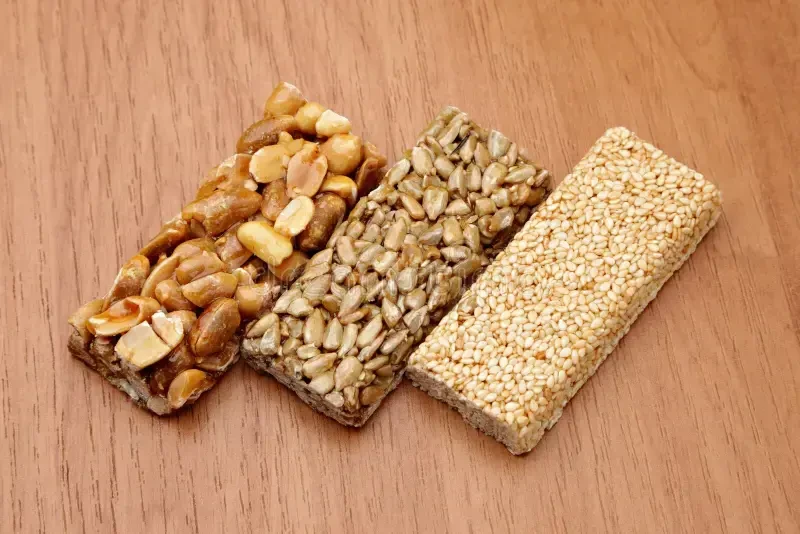The global protein bar market has witnessed remarkable growth over the past decade, fueled by shifting consumer preferences, rising health consciousness, and the increasing demand for convenient nutrition. Once a niche product favored mainly by athletes and bodybuilders, protein bars have now become a staple in mainstream diets, catering to a broad audience including busy professionals, fitness enthusiasts, and even children. As we move through 2025, several key trends are shaping the trajectory of the protein bar market.
1. Health and Wellness Movement Driving Demand
The growing global emphasis on health and wellness is a primary driver behind the protein bar market's expansion. Consumers are more informed than ever about the importance of balanced diets and adequate protein intake. As a result, there is a rising preference for high-protein, low-sugar, and clean-label products. Protein bars serve as an ideal snack for those looking to maintain muscle mass, manage weight, or simply avoid unhealthy alternatives.
This trend is further supported by the increasing prevalence of lifestyle diseases such as obesity and diabetes, encouraging consumers to seek healthier snacking options. Brands that highlight functional benefits, such as improved energy, satiety, and metabolic support, are resonating strongly with this health-conscious demographic.
2. Clean Labels and Transparent Ingredients
Modern consumers are paying close attention to what's in their food. Transparency and clean-label formulations have become non-negotiable features for many shoppers. There is a clear move away from artificial additives, preservatives, and excessive sugar or carbohydrates. Instead, brands are leaning into natural sweeteners like stevia and monk fruit, and incorporating recognizable, whole-food ingredients like nuts, seeds, oats, and dried fruits.
Vegan, gluten-free, and non-GMO certifications are also becoming standard as consumers demand greater inclusivity and integrity in the products they consume. This shift has led to innovation in protein sources, with more brands utilizing plant-based proteins such as pea, brown rice, and hemp in addition to traditional whey and soy.
3. Personalization and Functional Nutrition
Personalized nutrition is another growing trend in the protein bar space. As consumers become more interested in tailored health solutions, companies are developing products to cater to specific needs—whether that’s energy for athletes, keto-friendly options for dieters, or protein bars fortified with vitamins and adaptogens for mental focus and stress relief.
Brands are increasingly targeting niche audiences, such as women-focused protein bars that consider hormonal balance and nutrient needs, or bars designed for children with age-appropriate nutritional profiles. This level of personalization is becoming a differentiator in a crowded marketplace.
4. Sustainability and Ethical Sourcing
Sustainability is becoming a central concern in food and beverage markets, and protein bars are no exception. From compostable packaging to responsibly sourced ingredients, consumers are choosing brands that align with their values. Ethical sourcing of raw materials, including cacao, nuts, and plant proteins, is playing a larger role in purchasing decisions.
Additionally, plant-based protein bars are gaining momentum not only for health reasons but also due to their lower environmental footprint. Brands that emphasize carbon neutrality, ethical labor practices, and eco-friendly packaging are building stronger trust and loyalty among their customer base.
5. Market Expansion and Competitive Landscape
Geographically, North America remains the largest market for protein bars, driven by high levels of fitness awareness and a robust retail infrastructure. However, the Asia-Pacific region is emerging as a key growth area, thanks to rising disposable incomes, urbanization, and an increasing appetite for Western-style convenient foods.
The competitive landscape is both vibrant and dynamic. Established players like Clif Bar, Quest Nutrition, and RXBAR are being challenged by a wave of startups and private-label brands that are agile, innovative, and highly attuned to consumer trends. Strategic partnerships, influencer marketing, and e-commerce channels are playing crucial roles in helping brands reach and retain consumers.
Conclusion
The protein bar market is no longer just about nutrition—it’s about lifestyle. Consumers want convenience, taste, health, and alignment with their values all in one package. Brands that can innovate across these dimensions, while maintaining transparency and sustainability, are poised to thrive. As this market continues to evolve, the opportunities for growth and differentiation are immense, promising an exciting future for both consumers and producers.

